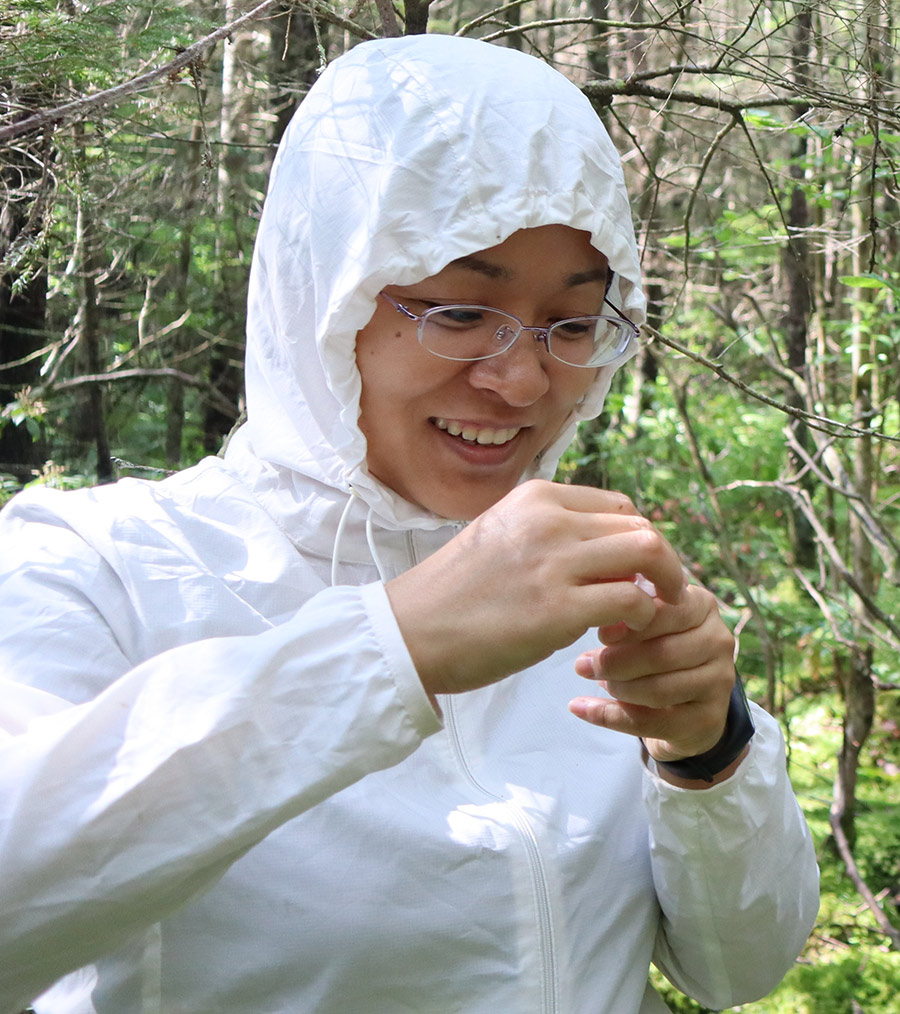 PDF(1592 KB)
PDF(1592 KB)


Allocation of non-structural carbohydrates (NSC) contents in leaves and branches of Quercus variabilis during its growth process
WEI Longxin, ZHANG Yiping, LI Yijie, ZHANG Yuru
Journal of Nanjing Forestry University (Natural Sciences Edition) ›› 2021, Vol. 45 ›› Issue (2) : 96-102.
 PDF(1592 KB)
PDF(1592 KB)
 PDF(1592 KB)
PDF(1592 KB)
Allocation of non-structural carbohydrates (NSC) contents in leaves and branches of Quercus variabilis during its growth process
 ,
,
【Objective】Non-structural carbohydrates (NSC) are important carbon reserves in trees, which are good indicators of tree carbon surplus or shortage stored. Research into the allocation of NSC contents among tree tissues will help to understand the mechanisms of carbon allocation within trees. This provides a scientific basis for further evaluation of the carbon sequestration potential of forest communities. 【Method】We conducted a field observational study by monitoring the NSC concentrations in the leaves and branches of Chinese cork oak (Quercus variabilis), and by synchronously observing the leaf phenology of those trees in some uneven-aged secondary oak forests growing in the east Qinling Mountain Range. By measuring the leaf length and fitting the leaf growth curve with the Gompertz function, the specific dates of the main phenological stages of leaves can be obtained. Sampling intervals were set semi-monthly/monthly during the leaf unfolding period from March to May, and monthly or bimonthly during the trees’ full growing season from June to November. The time series of observations and sampling spanned from May 2016 to June 2017. The content of NSC and its components in the leaves and branches of Q. variabilis was determined by the anthranone-sulfuric acid method. 【Result】① The dynamics of the content of NSC and its components in leaves and branches of Q. variabilis varied significantly with seasonal rhythms (P < 0.05). The average NSC content (mass fraction) in the leaves (8.94%) was higher than that in the branches (7.90%). ② The composition of NSC in leaves and branches of Q. variabilis was mainly soluble sugar, and comprised 62.5% and 63.5%, respectively. This physiological feature might be a life strategy for Q. variabilis, a deciduous tree species growing typically in the warm temperate zone, to survive in the local environment. ③ Significant differences in the NSC contents and their components between leaves and branches were observed mainly in the early (April-June) and late (October) growing seasons. Before entering the growing season, the NSC content of branches dropped rapidly to supply energy to bud-break and leaf development. In contrast, the leaves began to accumulate NSC by photosynthesis. In the late growing season, branches were inclined to store carbon to reconstruct the canopy for the next year. While, photosynthesis of leaves was reduced. ④ The Pearson correlation coefficients of the NSC content and their components between leaves and branches were not significant except for the ratio of soluble sugar to starch. The variation trend of NSC contents in leaves and branches was highly positive (R=0.986, P < 0.001) in the early growing season (March-June), but there was a time lag of 15-20 days.【Conclusion】It could be inferred that the distribution relationship of NSC contents between leaves and branches of Q. variabilis is not linear, but most likely non-linear. Therefore, when estimating the carbon sequestration potential of Q. variabilis, the nonlinear relationship of carbon distribution among different tissues should be comprehensively considered.

Quercus variabilis / non-structural carbohydrates (NSC) / soluble sugar / starch / leaf / branch / carbon distribution
| [1] |
潘庆民, 韩兴国, 白永飞, 等. 植物非结构性贮藏碳水化合物的生理生态学研究进展[J]. 植物学通报, 2002,19(1):30-38.
|
| [2] |
张海燕. 中国温带森林12个树种树干和树枝的非结构性碳时空变异[D]. 哈尔滨: 东北林业大学, 2013.
|
| [3] |
|
| [4] |
|
| [5] |
|
| [6] |
|
| [7] |
王文娜, 李俊楠, 王会仁, 等. 不同树种叶片非结构性碳水化合物季节动态比较[J]. 东北林业大学学报, 2014,42(4):46-49,108.
|
| [8] |
刘万德, 苏建荣, 李帅锋, 等. 云南普洱季风常绿阔叶林主要树种非结构性碳水化合物变异分析[J]. 林业科学, 2017,53(6):1-9.
|
| [9] |
印婧婧, 郭大立, 何思源, 等. 内蒙古半干旱区树木非结构性碳、氮、磷的分配格局[J]. 北京大学学报(自然科学版), 2009,45(3):519-527.
|
| [10] |
王彪, 江源, 王明昌, 等. 芦芽山不同海拔白杄非结构性碳水化合物含量动态[J]. 植物生态学报, 2015,39(7):746-752.
|
| [11] |
邓云鹏. 不同纬度栓皮栎非结构性碳水化合物和营养元素含量研究[D]. 北京: 中国林业科学研究院, 2016.
|
| [12] |
|
| [13] |
|
| [14] |
|
| [15] |
欧阳明, 杨清培, 祁红艳, 等. 亚热带落叶与常绿园林树种非结构性碳水化合物的季节动态比较[J]. 南京林业大学学报(自然科学版), 2014,38(2):105-110.
|
| [16] |
徐钰, 许凯, 王文娟, 等. 不同林龄杨树细根糖化学组分对氮沉降的响应[J]. 南京林业大学学报(自然科学版), 2014,38(3):13-18.
|
| [17] |
李娜妮, 何念鹏, 于贵瑞. 中国4种典型森林中常见乔木叶片的非结构性碳水化合物研究[J]. 西北植物学报, 2015,35(9):1846-1854.
|
| [18] |
白婷, 喻方圆,
|
| [19] |
曹新向, 丁圣彦, 李昊民. 河南省洛宁县全宝山国有林场植被的调查分析[J]. 河南科学, 2003,21(2):183-186.
|
| [20] |
|
| [21] |
|
| [22] |
章异平, 曹鹏鹤, 徐军亮, 等. 秦岭东段栓皮栎叶片非结构性碳水化合物含量的季节动态[J]. 生态学报, 2019,39(19):7274-7282.
|
| [23] |
姚光刚, 李国雷, 郑永林, 等. 缓释肥施用量对槲栎容器苗苗木质量的影响[J]. 南京林业大学学报(自然科学版), 2019,43(1):69-75.
|
| [24] |
汤绍虎, 罗充. 植物生理学实验教程[M]. 重庆: 西南师范大学出版社, 2012.
|
| [25] |
|
| [26] |
|
| [27] |
于丽敏, 王传宽, 王兴昌. 三种温带树种非结构性碳水化合物的分配[J]. 植物生态学报, 2011,35(12):1245-1255.
|
| [28] |
刘万德, 苏建荣, 李帅锋, 等. 云南普洱季风常绿阔叶林不同林层非结构性碳水化合物特征[J]. 应用生态学报, 2018,29(3):775-782.
|
| [29] |
|
| [30] |
|
| [31] |
周永斌, 吴栋栋, 于大炮, 等. 长白山不同海拔岳桦非结构碳水化合物含量的变化[J]. 植物生态学报, 2009,33(1):118-124.
|
/
| 〈 |
|
〉 |